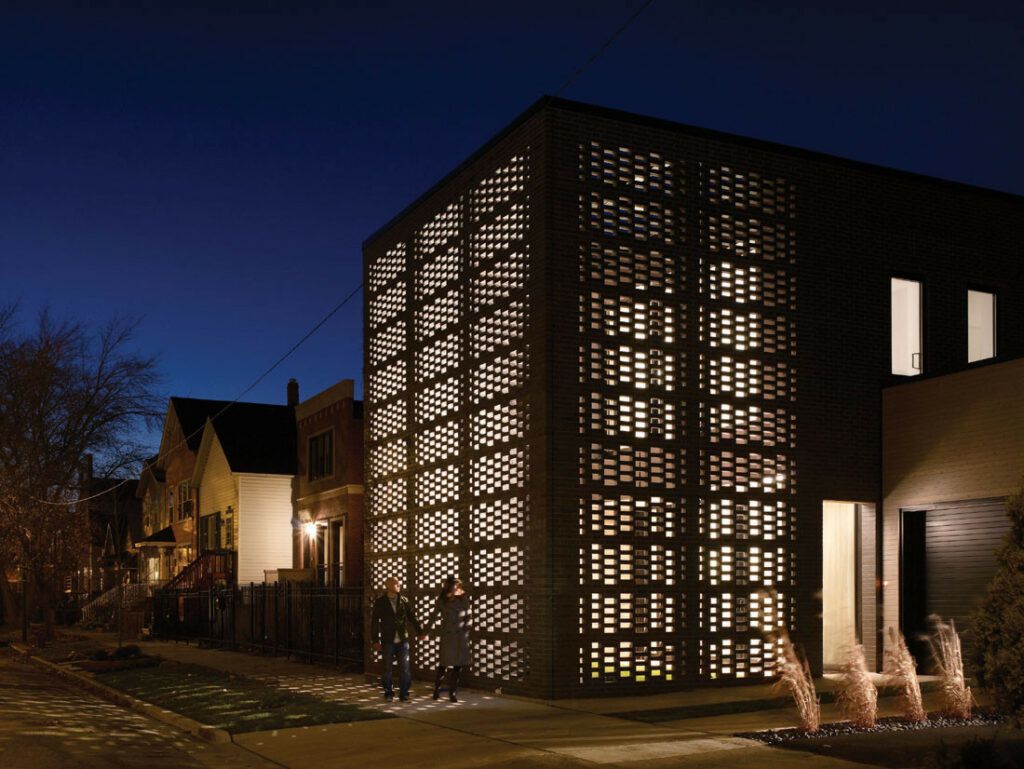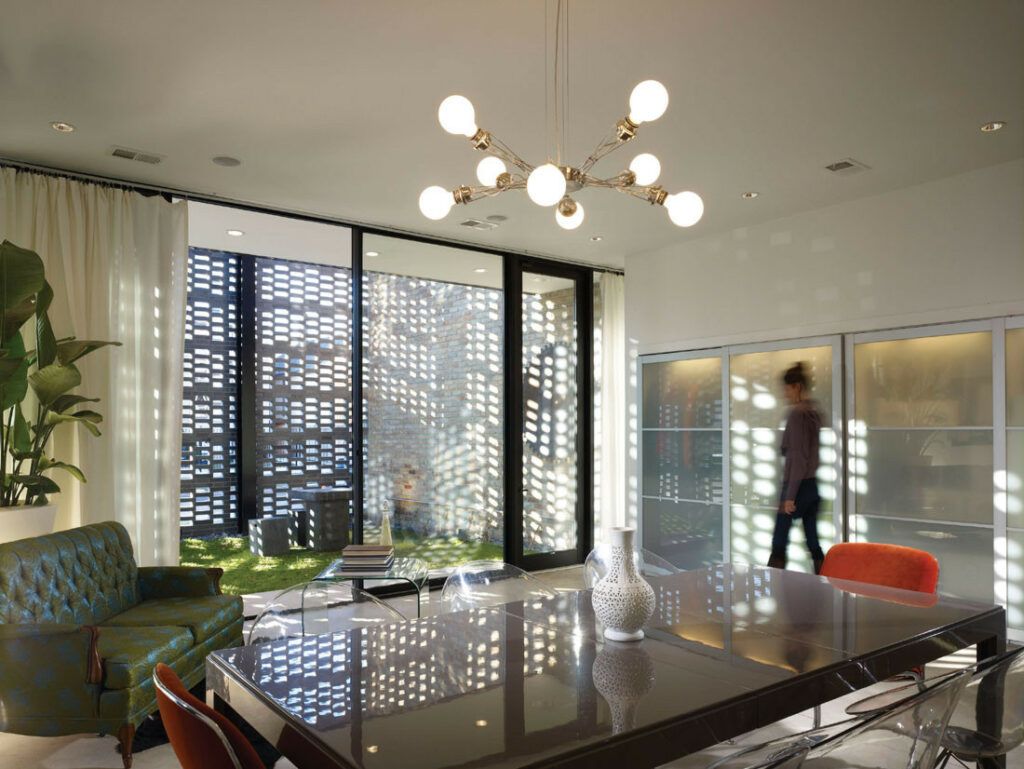Brick Weave House Casts Patterns of Light

Sometimes a home is simply too far gone or too eclectically assembled to ‘save’ as it is – a restoration would simply seem kitschy and false. So what do you do when you want to preserve historical elements of your hodgepodge home while rebuilding it to be your dream house? This strange Chicago residence is at once a tribute to the history of the house and neighborhood while also existing as a radical aesthetic departure from its context.
At first glance one would never guess that the core of this house dates back to the 1880s, when it was originally a stable. It was slowly added to over the years, accumulating piecemeal wood and brick additions, extensions and reconstructions that eventually led it to being an actual home. This most recent and remarkable set of changes has resulted in something hardly recognizable yet still tied to its roots.

By the time the current owners decided they would like to restore some kind of original form there were too many iterations to choose from and too little structure to safely preserve. As a result, they commissioned Studio Gang Architects to create a stunning gray brick screen around the home and held onto what few rooms and structural elements they could in the core of the house.
“The ‘Brick-Weave’ House sits on the footprint of a century-old stable in Chicago’s West Side. With a modest budget, the owners hoped to salvage the entire building until hidden fire damage was uncovered. Strategically cutting away damage and weaving in new construction allowed 30% of the original structure to be reused. Front walls and roof were removed, creating a garden surrounded by a porous “brick-weave” screen that demonstrates a sensibility in the use of traditional materials in new and surprising ways.”

“Variation in ceiling heights and floor levels weaves together the two-story garden at the front of the house with the single-story volume at the back through a cascading section.”
“The screen animates the garden and interior with dappled sunlight, establishing a visual connection to and from the street. Rectangular voids in the screen throw hexagonal patterns of light inside. At night, the pattern reverses: the screen becomes a lantern.”




